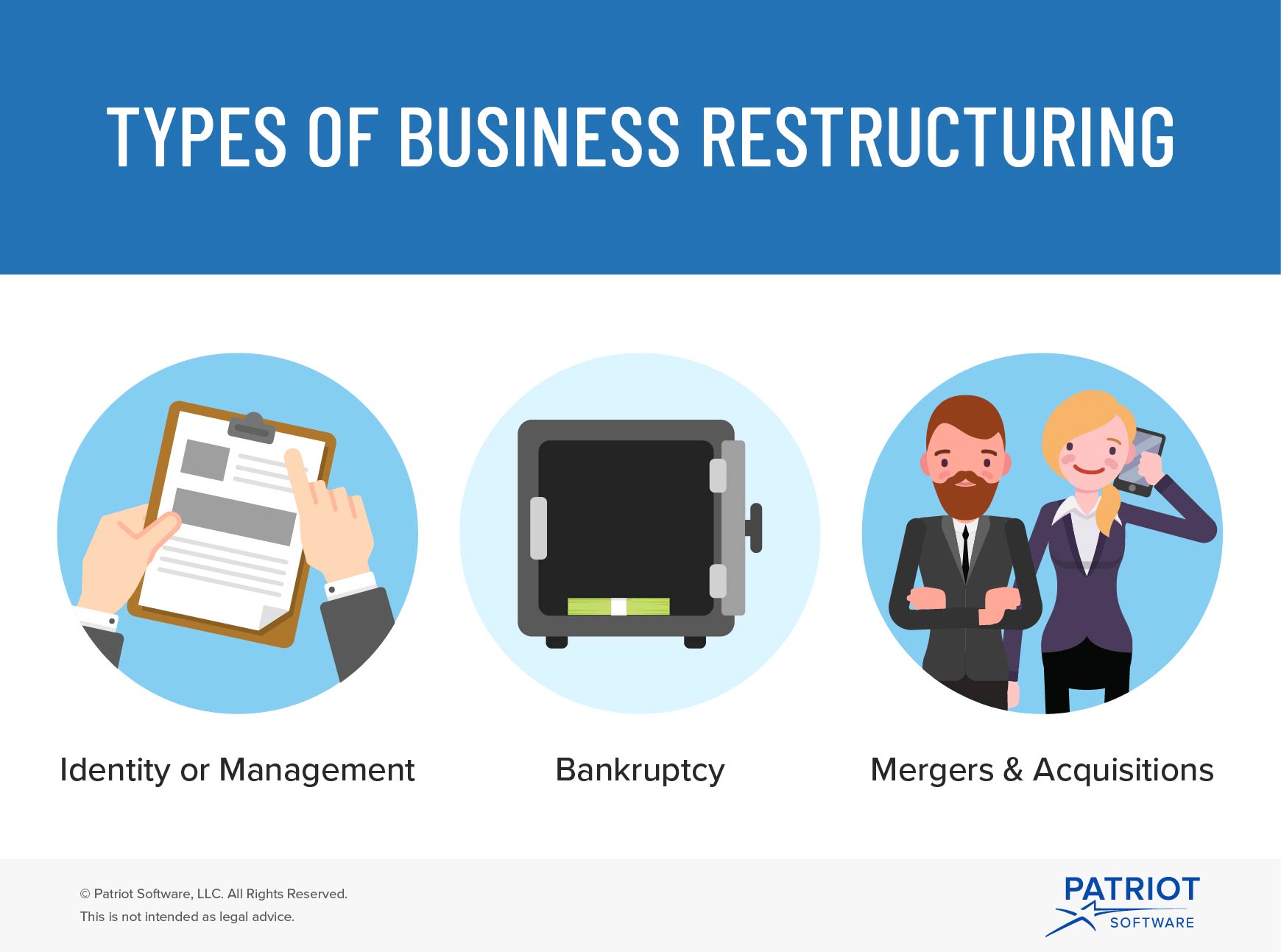In business, there are no guarantees. At some point, you may find your small business struggling to make ends meet or overburdened by debt. If you’re looking to increase your company’s bottom line, consider business reorganization.
Some business owners panic when they think of bankruptcy organization. But before you stress out, remember two things. First, there are multiple types of reorganizations beyond bankruptcy. And second, bankruptcy reorganization is not the same thing as liquidation.
Read on to learn about reorganization and how it can help a struggling company stay in business.
What is business reorganization?
Reorganization, or business restructuring, is a process where a company does an overhaul of its current strategy, setup, and operations. Typically, businesses go through reorganization when they have financial troubles, new owners or staff, or a structural change. When a business reorganizes, it generally changes its business tax structure.
In addition to a tax structure change, businesses that reorganize may change up their marketing strategies, staff, products or services, or business name.
If your business is struggling, don’t ignore the warning signs. A successful company restructure can result in increased profits, operational efficiency, and debt paydown.
However, business reorganization efforts don’t always work. Ineffective reorganization may lead to bankruptcy. And, businesses that go through bankruptcy reorganization might end up going through liquidation.
Reorganizations might be voluntary or mandatory, depending on the circumstances.
Types of business restructuring
There are a number of reasons a business might go through reorganization. Three common types of restructuring include:
- Identity or management
- Bankruptcy
- Mergers and acquisitions
Read on to learn about each type of business reorganization.
Identity or management
Sometimes, a business might voluntarily decide to reorganize itself. A company may choose to reorganize to boost profits.
Identity or management reorganization occurs when a business updates things like its name, mission statement, offerings, and operations. If you go through this type of reorganization, you might also make changes to your staff, like adding or removing employees, promoting workers, or moving around departments.
Changing up your business’s strategy and operations may result in increased performance. But, it might also leave your customers confused. And, identity reorganization could cost you loyal customers. Before you change your business’s identity, conduct a risk analysis to determine if the change is worth it.
Bankruptcy
If nothing else works, failing businesses may opt for bankruptcy reorganization. Businesses that go through this type of reorganization start by filing bankruptcy. But, the company continues operating.
Bankruptcy reorganization extends a business’s life through financial restructuring. The company may also change up other strategies, like marketing, management, or mission.
Through bankruptcy reorganization, businesses make smaller payments to creditors. Through these special arrangements, the company attempts to pay down its debts.
Bankruptcy reorganization vs. liquidation
Unlike reorganization, liquidation is a type of small business bankruptcy where the business closes and divides its assets to pay creditors.
Through bankruptcy reorganization, there is hope that the business will successfully continue to operate. As a result, the business is still obligated to pay down its debts. On the other hand, liquidation of business wipes out many personal and business debts. But, the business closes up shop.
Mergers and acquisitions
A merger is when two businesses come together to form a new company. An acquisition occurs when a business buys out another business. Reorganization is necessary when a merger or acquisition takes place.
When a business merges with another company, the joined forces may need to restructure to develop a new identity. And, the new combined business may need to let some employees go or make management changes.
If a business is acquired by another company, restructuring typically includes staff, management, and strategy changes.
Is business reorganization worth it?
Are you thinking about reorganizing your business? If so, consider consulting a small business lawyer. And, be sure to weigh the pros and cons.
Advantages of business reorganization can include:
- Boosted profits
- Increased efficiency
- Business life extension
- Improved strategy
- Better financial arrangements
Disadvantages of business reorganization can include:
- The chance that it may not work
- Decreased employee morale
- Confused customers
- Significant time investment
- Setbacks in cash flow
Frequently assess your business’s health by analyzing your books. Patriot’s online accounting software makes it easy to track your incoming and outgoing money, monitor unpaid invoices, and reconcile your bank statements. And, we offer free, U.S.-based support. Get your free trial now!
This is not intended as legal advice; for more information, please click here.

